Video of the Week:
Easy to Make: Row Planting Tool
Fruit:
Remove Blossoms on Newly Planted Strawberries
Newly planted everbearing plants also should have fruits removed for the first 4 to 6 weeks after planting so they develop a strong root system. (Ward Upham)
Vegetables:
Fertilizing Cole Crops
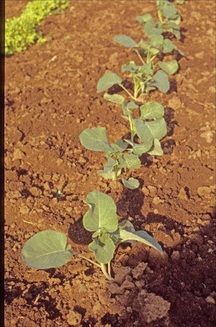
Use fertilizers high in nitrogen for sidedressing such as nitrate of soda or blood meal at the rate of 2 pounds per 100 feet of row. You may also use lawn fertilizers that have close to 30 percent nitrogen such as a 30-3-4 or 29-5-4 but the rate should be cut in half to 1 pound per 100 feet of row. Do not use lawn fertilizers that have weed killers or preventers. Fertilizer must be watered in if timely rains don't do that job for you.
We have a sheet available that gives recommendations on how to sidedress specific vegetable crops. It can be found at: http://www.hfrr.ksu.edu/doc1991.ashx (Ward Upham)
Pests:
Ash/Lilac Borer
If you have had problems with canes or stems of lilac and privet suddenly wilting, or ash trees that show borer holes in the trunk and larger branches, the ash/lilac borer may be to blame. This insect causes the base of infested lilac stems to swell and the bark to separate from the wood. A fine sawdust-like material is present around holes in the canes. Ash and mountain ash also are affected. The borer attacks the trunk, which may cause bark to swell and crack if there are repeated infestations.
Ash/lilac borers overwinter as larvae in infested trees and shrubs. Moths generally begin to emerge in mid to late April. Emergence peaks in May, dwindles by mid to late June and ends by the first week of July. However, this varies by year. The moth has clear wings and resembles a wasp. There is one generation per year.
Public and commercially managed properties often use pheromone traps to determine the presence of adults. Spray treatments are started seven to 10 days after capture of the first moths.
Sprays also can be timed using phenology, the practice of timing one event by another. The first spray for ash/lilac borer should be applied when the Vanhoutte spirea is in full to late bloom. This is often about the third week in April but can be as early as late March and as late as mid-May. Apply a second spray four weeks after the first. To see a photo of Vanhoutte Spirea, go to: http://plantsci.missouri.edu/ps2210/list9/spix_van.htm .
Thoroughly treat the trunk and larger limbs of ash or the lower portion of the stems of lilac or privet. Heavily infested ash should be cut and burned during the fall and winter. Infested stems of lilac or privet should be removed as well.
Bifenthrin or permethrin (Hi-Yield Garden, Pet, and Livestock Insect Control and 38 Plus Turf, Termite and Ornamental Insect Control) are labeled for control. Though there are a number of homeowner products that contain one or the other of these two active ingredients, the permethrin products listed above are the only ones I've found that specifically lists the ash/lilac borer on the label with directions for control. (Ward Upham)
Borers on Pines?
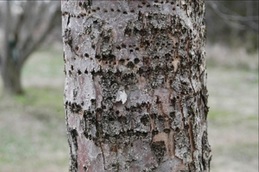
Other trees this bird often attacks include apples, maples, and Bradford pear, but about any tree species is a potential target. Surprisingly, certain trees may become favorites to the exclusion of nearby trees of the same species. Damage to mature, established trees are usually slight and temporary though small trees may be girdled and killed.
These birds are migratory and are usually present from October to April. Therefore, they should not cause any more damage until next fall. If you feel that damage is severe enough to warrant control, you may want to try one of the following remedies next October.
- Wrap the trunk with fine wire mesh in the area of damage. This may discourage them if left in place for several months. The mesh MUST be adjusted every six months or removed when no longer needed. If the mesh is left in place, the tree will likely be girdled. The mesh may potentially be more deadly than the sapsucker.
- Use Tanglefoot on the area of damage. This is a sticky material that is applied to tree trunks to capture insects that crawl up the trunk. Yellow-bellied sapsuckers do not like to put their feet in the sticky material. This material may lose stickiness due to dust or other materials and require additional applications. (Ward Upham)
Carpenter Bees
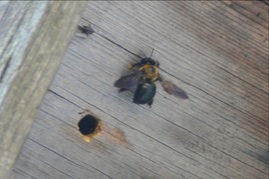
Termites or Ants
Fortunately, there are several differences that can easily distinguish the two. For example, ants have a thin waist; the waist of a termite is thick. Also, ants' antennae are elbowed, while termites' are not. Thirdly, termites have two pairs of wings that are of equal length. Ants also have two pairs of wings, but theirs are of unequal length. Homeowners who find signs of termite activity should shop for a reputable pest control firm. (Ward Upham)
Turfgrass:
Controlling Broadleaf Weeds in Lawns in the Spring
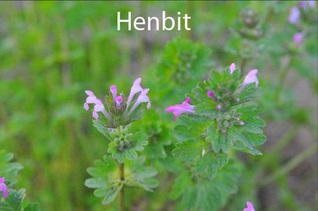
So, what do you do in the spring? First, realize that even if you do everything right, you may not obtain good control. Let’s look at what we can do to maximize our chances of success.
Apply your herbicide early but be sure the weeds are actively growing. The better the weed is growing, the more herbicide is taken up and the more likely you are to see good control. Therefore, do not spray too early in the spring.
On the other hand, the longer the delay once weeds are growing well, the more time the weed has to build up energy reserves and the harder it will be to control. We must also be concerned with drift when we apply herbicides later in the spring. Certain plants are very sensitive to many of our broadleaf herbicides and can be harmed. For example, grapes, tomatoes and redbuds are indicator plants for 2,4-D damage. In other words, they will suffer greater harm than other plants from the spray. Try to apply your herbicide before the grapes and redbuds have broken bud and before tomatoes are planted.
The next question is what do we use? Use products that contain a mixture of herbicides such as Trimec, Weed-B-Gon, Weed-Out, Weed-Stop and Weed Killer for Lawns. These products contain 2,4-D, MCPP and Dicamba. Weed Free Zone (also sold under the name of Speed Zone) contains the three active ingredients mentioned above plus carfentrazone. It gives a quicker response than the other products mentioned and will work better when temperatures drop below 50 degrees.
As I mentioned before, even if everything is done correctly, success is difficult. Remember that henbit and chickweed are winter annuals and will die naturally when the weather turns hot.
The long-term solution for weeds is a good, thick lawn. Consider overseeding or redoing your lawn next September in order to avoid weed control problems. If you do have thin areas in the lawn and broadleaves invade, spray in late October to early November on a day that is over 50 degrees. Control at that time is easy and effective. The hard part is to remember to look for the weeds in the fall as they are small and easily overlooked. Mark your calendars now as a reminder. (Ward Upham)
Miscellaneous:
Use a String Line and Planting Board
So, what is a planting board? A planting board is a 1 x 4 board that is four feet long. Relatively deep notches are cut every foot with shallow notches at 6 inches from each deep notch. Some gardeners also bevel the side opposite the notches so they can work the beveled end into the soil to make a shallow trench for seed.
When planting, lay the planting board near your tent peg and align it with the string. It is now easy to place plants or seeds at the recommended spacing. Move the planting board with you as you progress down the row. (Ward Upham)
Contributors: Ward Upham, Extension Associate
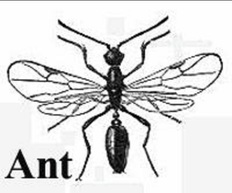
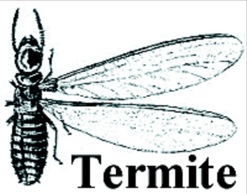
 RSS Feed
RSS Feed
